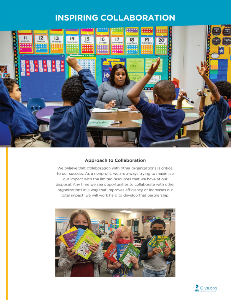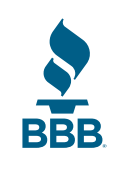
Advancing Collaboration with AdoptAClassroom.org
About the Organization
AdoptAClassroom.org believes every child deserves the tools and materials they need to learn and thrive in school. Since 1998, AdoptAClassroom.org has raised $65MM, and equipped more than 6.4 million students across the U.S.
Featured Guest
Ann Pifer, Executive Director
Approach to Collaboration
We believe that collaboration with other organizations is critical to our success. As a nonprofit, we are always trying to maximize our impact with the limited resources that we have at our disposal. Any time we see opportunities to collaborate with other organizations in a way that improves efficiency or increases our total impact, we will work hard to develop that partnership.
Application of the 9 Considerations for Collaboration
Build Trust
Trust starts with a mutual understanding of what each organization is looking to accomplish through a potential collaboration with a careful eye towards mission drift. Being upfront about what we can and can’t do within our current model helps us choose the right partnerships. It also advances trust in a relationship to acknowledge what things might be “off limits” to collaboration and be clear about calling those out. Not identifying those clearly can lead to frustration, lack of trust, and wasted time.
AdoptAClassroom.org regularly sets strategic goals that serve as a kind of filter on what projects we can say “yes” to at any given time. We believe these goals will help drive us towards our mission, so any collaboration must fit within those goals. Once we are in conversation with a potential collaborator, we work hard to understand exactly what our partner’s objectives are, and to communicate our own, to ensure that we are aligned.
Having a clear set of desired outcomes, timelines for delivery, and metrics for success help ensure that collaborative projects stay on track. Regular check-in meetings and clear communication help us identify if we’re missing the mark.
Take Stock
While every organization has weaknesses, we haven’t found that partnerships that operate from the place of one organization’s strengths filling in for another’s weaknesses
are true collaborations. Such partnerships may still be mutually beneficial at times, but the power imbalance must be acknowledged and accepted for a partnership like that to be sustainable.
Start Small
As a small non-profit, we borrow a concept from the world of software development and constantly ask, “What is the minimum viable product (MVP) version of this?” Starting
with small, short-term projects not only builds confidence but allows for the collection of data and feedback that can be used to ensure larger projects are more successful.
The MVP approach discussed in Start Small is a big part of this, and we also ensure regular communications and check-ins between partners so bumps in the road can be addressed before they scale into full-on roadblocks.
Take a Portfolio ApproachWhile we would love to take a portfolio approach, the reality is that our limited resources usually force us to choose just one partner in a given area, at a given time. As referenced in Seek to Assure the Success of Your Collaborator, our organization’s strategic plan serves as our North Star when considering any collaboration and helps us make those choices. We have learned that if we spread ourselves too thin, we risk starving collaborations of the time, attention, and follow-up that they need to be successful.
Consider Non-Traditional PartnersWe regularly partner with corporations, startups, and small businesses. In fact, our primary program of connecting donors with teachers who need classroom supplies across the country is especially well-suited for corporate giving campaigns because we can connect corporate employees with local classrooms anywhere in the U.S. We have also collaborated with organizations involved in lobbying for legislation at the state and federal level aimed at advancing equity in education and/or support teachers and the teaching profession. While we cannot engage in lobbying ourselves, we can lend our voice in support of other organizations that do.
Keep Your Donors Apprised of Your Collaborations
Major partnerships or corporate campaigns are described and/or promoted on our blog, social media, and donor newsletter. We think that our donors
notice and value collaborations that enable us to leverage the impact of their donations and we think that it can inspire them to contribute additional dollars in the future.
Future Collaborations
Any collaboration aimed at advancing equity in education and supporting teachers as professionals, especially by helping to get school supplies into the classrooms
where they are needed the most, is ideal for us. Ultimately, AdoptAClassroom.org would love to be out of business or pivot to something else entirely if it means we’ve accomplished our goal of every student in the U.S. having the tools and materials
they need to succeed in school.




